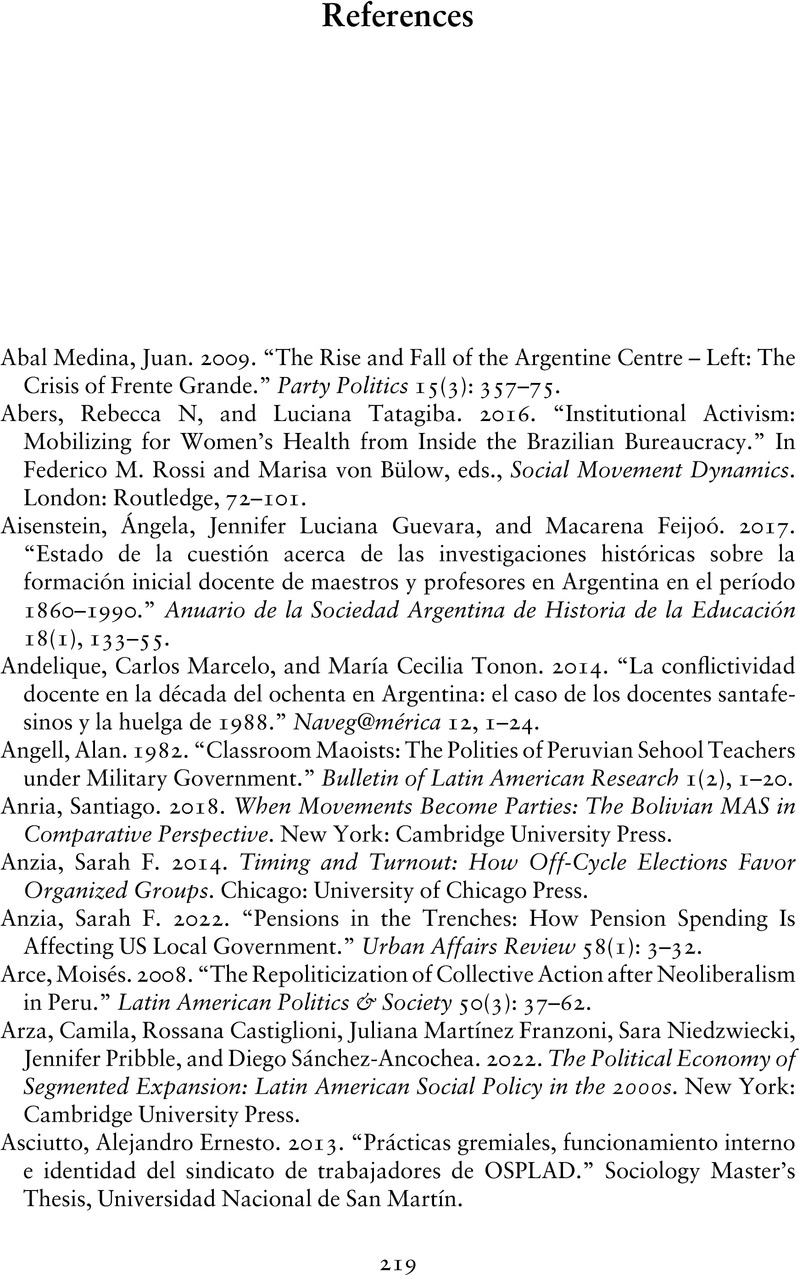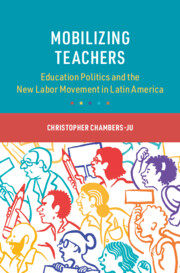Book contents
- Mobilizing Teachers
- Cambridge Studies in the Comparative Politics of Education
- Mobilizing Teachers
- Copyright page
- Dedication
- Contents
- Figures
- Tables
- Preface and Acknowledgments
- Abbreviations
- 1 Why Teachers?
- 2 How Union Organizations Shape Teacher Mobilization
- 3 The Origins of National Teacher Organizations
- 4 Organizational Consolidation in Mexico
- 5 Instrumentalism in Mexico
- 6 Organizational Weakening in Argentina
- 7 Movementism in Argentina
- 8 Factionalism in Colombia
- 9 Leftism in Colombia
- 10 Teacher Politics in Comparative Perspective
- References
- Index
- References
References
Published online by Cambridge University Press: 16 May 2024
- Mobilizing Teachers
- Cambridge Studies in the Comparative Politics of Education
- Mobilizing Teachers
- Copyright page
- Dedication
- Contents
- Figures
- Tables
- Preface and Acknowledgments
- Abbreviations
- 1 Why Teachers?
- 2 How Union Organizations Shape Teacher Mobilization
- 3 The Origins of National Teacher Organizations
- 4 Organizational Consolidation in Mexico
- 5 Instrumentalism in Mexico
- 6 Organizational Weakening in Argentina
- 7 Movementism in Argentina
- 8 Factionalism in Colombia
- 9 Leftism in Colombia
- 10 Teacher Politics in Comparative Perspective
- References
- Index
- References
Summary

- Type
- Chapter
- Information
- Mobilizing TeachersEducation Politics and the New Labor Movement in Latin America, pp. 219 - 234Publisher: Cambridge University PressPrint publication year: 2024

